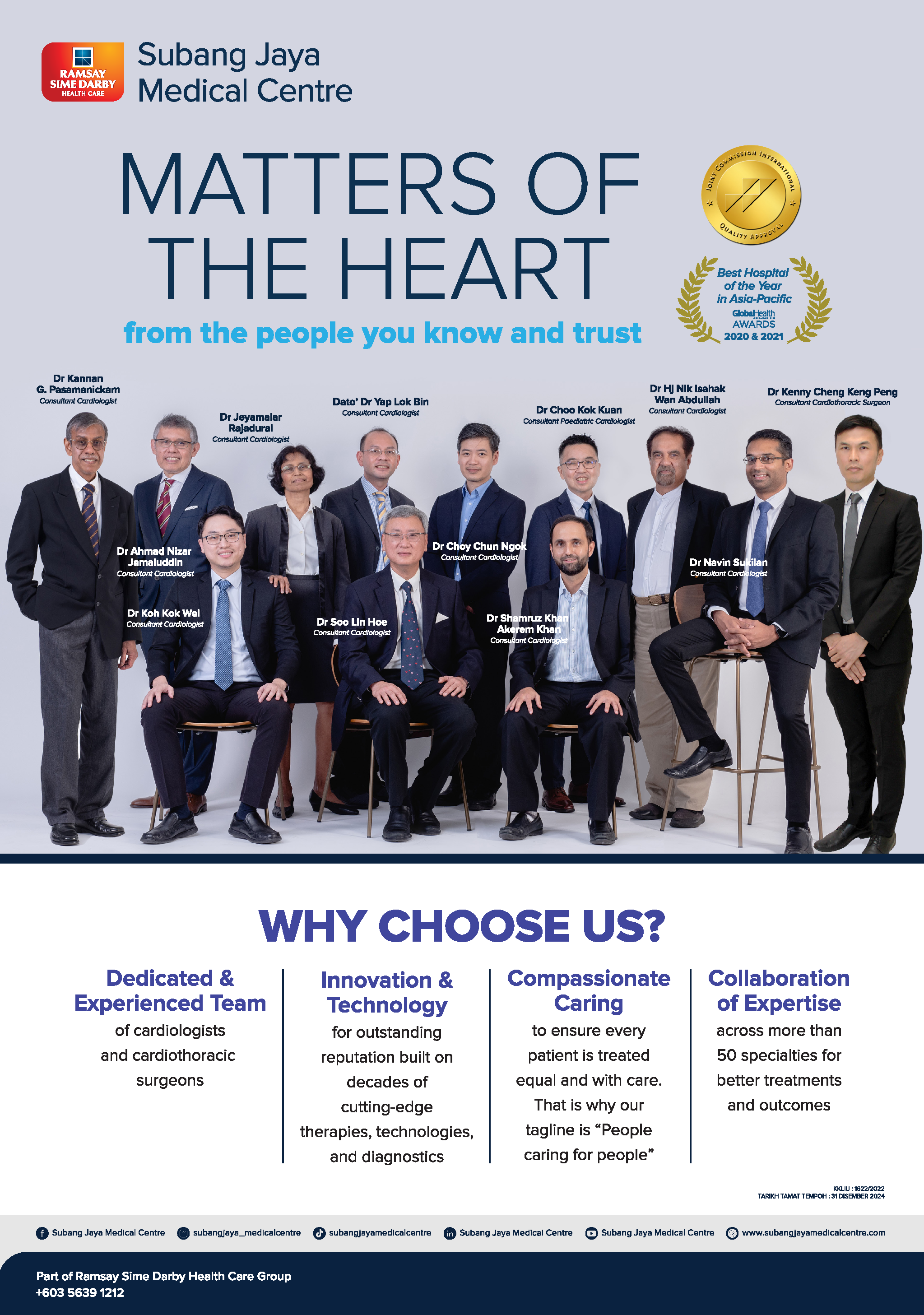Paediatric Cardiothoracic Surgeon shortage
SUBANG JAYA: Cardiothoracic surgeons with paediatric cardiac surgery expertise are hard to come by here in Malaysia due to the complexity of the job. These rare breeds are few and far in between.
In April, the director-general of Health, Tan Sri Dr Noor Hisham Abdullah, said that only seven full-time cardiothoracic surgeons were performing paediatric cardiac surgery and in the past 10 years, there has been only one new paediatric cardiothoracic surgeon.
Noor Hisham noted that it is estimated that there is a deficit of 1,550 surgical slots for paediatric cardiac surgery. Consultant cardiothoracic surgeon Dr Kenny Cheng is also familiar with paediatric cardiac surgery apart from his adult cardiothoracic practice.
Cheng, a Cardiothoracic surgeon who practises at Subang Jaya Medical Centre (SJMC), told theSun heart operations in babies are way more challenging than in adults as the structures are small and heart diseases in children are more complicated.
“It is always a joy seeing a patient recover, especially the ones whose case previously seemed complicated in the beginning.
“This topic about paediatric cardiac surgery in Malaysia is a heart-wrenching one as there are too many children requiring help but just a handful of surgeons with such expertise nationwide. Cardiothoracic surgery is expensive and labour-intensive and it requires intensive care and well-coordinated teamwork.
“It is different from adult cardiac surgery in terms of the team itself. You will need specific surgeons, anaesthetists, perfusionists, specialised cardiac nurses and support staff who are familiar with the paediatric field,” he said.
Cardiothoracic surgery as a highly specialised discipline and widely regarded as among the more challenging specialities in medical practice.
“This demanding expertise requires both speed and precision to achieve the best surgical results,” he told theSun.
The skill sets acquired in paediatric heart surgery also add versatility to the surgical armamentarium.
Coronary artery bypass grafting (CABG) is by far the most common cardiac surgery among adults. “It constitutes almost 80% of all cardiac surgeries in Malaysia and is a surgery to construct new grafts to bypass the blocked heart vessels.
“Should someone have multivessel disease, meaning blockages of two or more heart vessels, CABG has been shown to improve survival, more durable, better longevity and better long-term outcomes compared to other modes of treatment. This has been proven repeatedly over time with clinical studies and also ‘Clinical Practice Guidelines’ of both European and American Heart Societies,” he said.

The Cardiology team from Subang Jaya Medical Centre
However, as with any kind of surgery, Cheng noted that CABG inherently does have its risks such as bleeding, infections, stroke, low cardiac output syndrome and renal impairment.
“The risk of such things happening is usually two to four per cent in an otherwise healthy individual,” he said. Nevertheless, Cheng added that there have been many innovations, new techniques and new surgical strategies employed in modern cardiothoracic practice.
“Harvesting the donor’s vessel requires a long surgical incision along the patient’s leg, eg, between the ankle and groin. Once the vessel is extracted, the surgeon then attaches one end of the vein above the blockage and the other end below the blockage. Blood bypasses the blockage by going through the new graft to reach the heart muscle.
“Due to its invasive nature, conventional vein harvesting can cause infections and severe scarring on the leg. However, a minimally invasive procedure called endoscopic vein harvesting (EVH), which only requires a two to three-centimetre incision, can avoid these risks as it makes smaller cuts via minimally invasive equipment for vessel extraction.
“Additionally, surgeons can limit the damage to the surrounding tissue causing less pain and swelling after the procedure, which reduces the total hospital stay. This also means the patient would be able to start cardiac rehabilitation programmes sooner,” he said.
Furthermore, Cheng said the second most common heart operation is heart valve operation which is about 20% of all heart surgeries in Malaysia.
“These heart valves might be diseased or become degenerative with advancing age. Therefore the valves are usually repaired as much as possible or will end up being replaced if not repairable,” he said.
SJMC also provides services for all stages of lung cancer therapy, including open and minimally invasive thoracic surgery, next-generation sequencing and genomic molecular profiling.
Thoracic surgeries include procedures such as resections for lung cancer (eg. lobectomy, pneumonectomy, wedge resection), resection of mediastinal tumours and sympathectomy for hyperhidrosis (abnormally excessive sweating).
Other procedures include decortication for empyema, mediastinoscopy, rigid or flexible bronchoscopy, minimally invasive VATS surgery and surgery for pneumothorax, diaphragm defects, pleural effusions, chest wall tumours and trauma.
